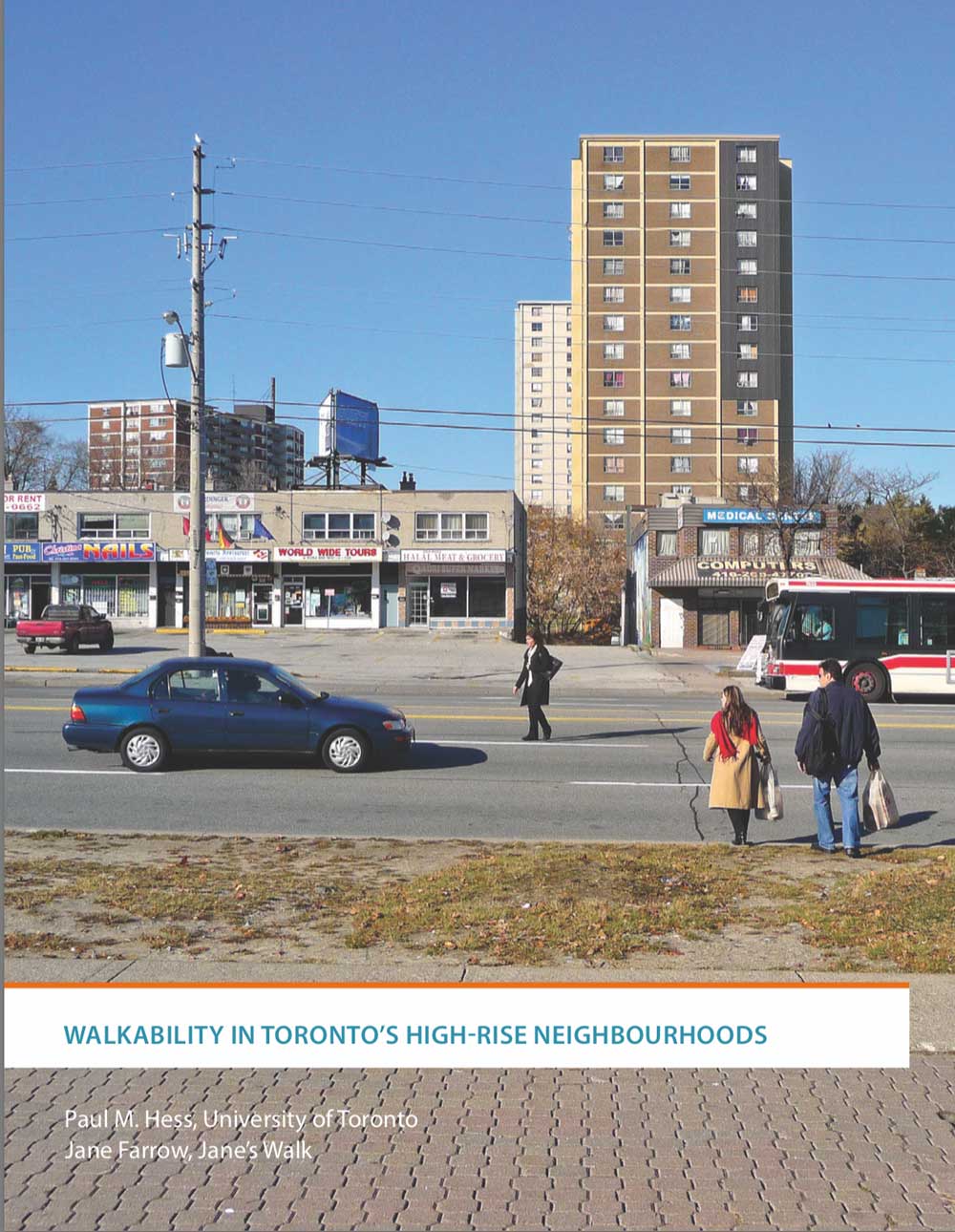
Walkability is a quantitative and qualitative measure- ment of how inviting or un-inviting an area is to pedes- trians. Walking matters more and more to towns and cities and the connection between walking and the social vibrancy of neighbourhoods is becoming clear. Built environments that promote and facilitate walking — to stores, work, school and amenities — are better places to live, have higher real estate values, promote healthier lifestyles, have lower greenhouse gas emis- sion rates and show higher levels of social cohesion.
This walkability study examines eight Toronto high-rise neighbourhoods – seven in the inner suburbs and one in the core. They include: Chalkfarm, Kingston-Gallo- way/Orton Park, North Kipling, The Peanut, St James Town, Scarborough Village, Steeles L’Amoreaux, and Thorncliffe Park. Group discussions, surveys and map- ping exercises took place in these neighbourhoods between the fall of 2009 and 2010. In each neighbour- hood, a small sample of residents (25 to 40) were asked to share their opinions of the walking environment, highlighting safety concerns, traffic and connectivity problems, how they access shopping, work or school,
where they like to walk and other issues. The results were compiled and discussed in preliminary reports. This overview report brings together the cross-tabu- lated data gathered from all eight high-rise study areas and presents a summary of findings.
Citation TBD
By Paul Hess and Jane Farrow